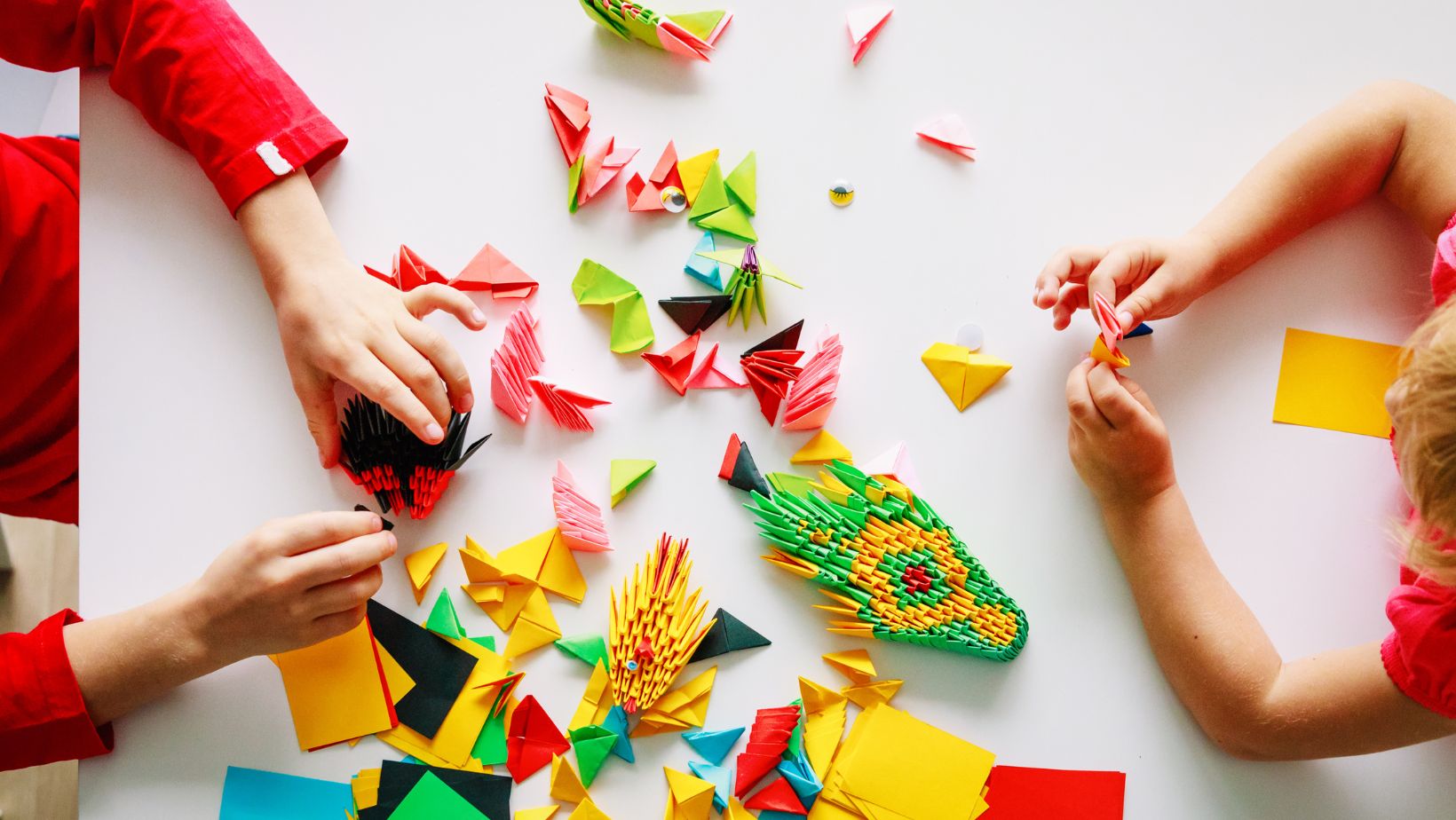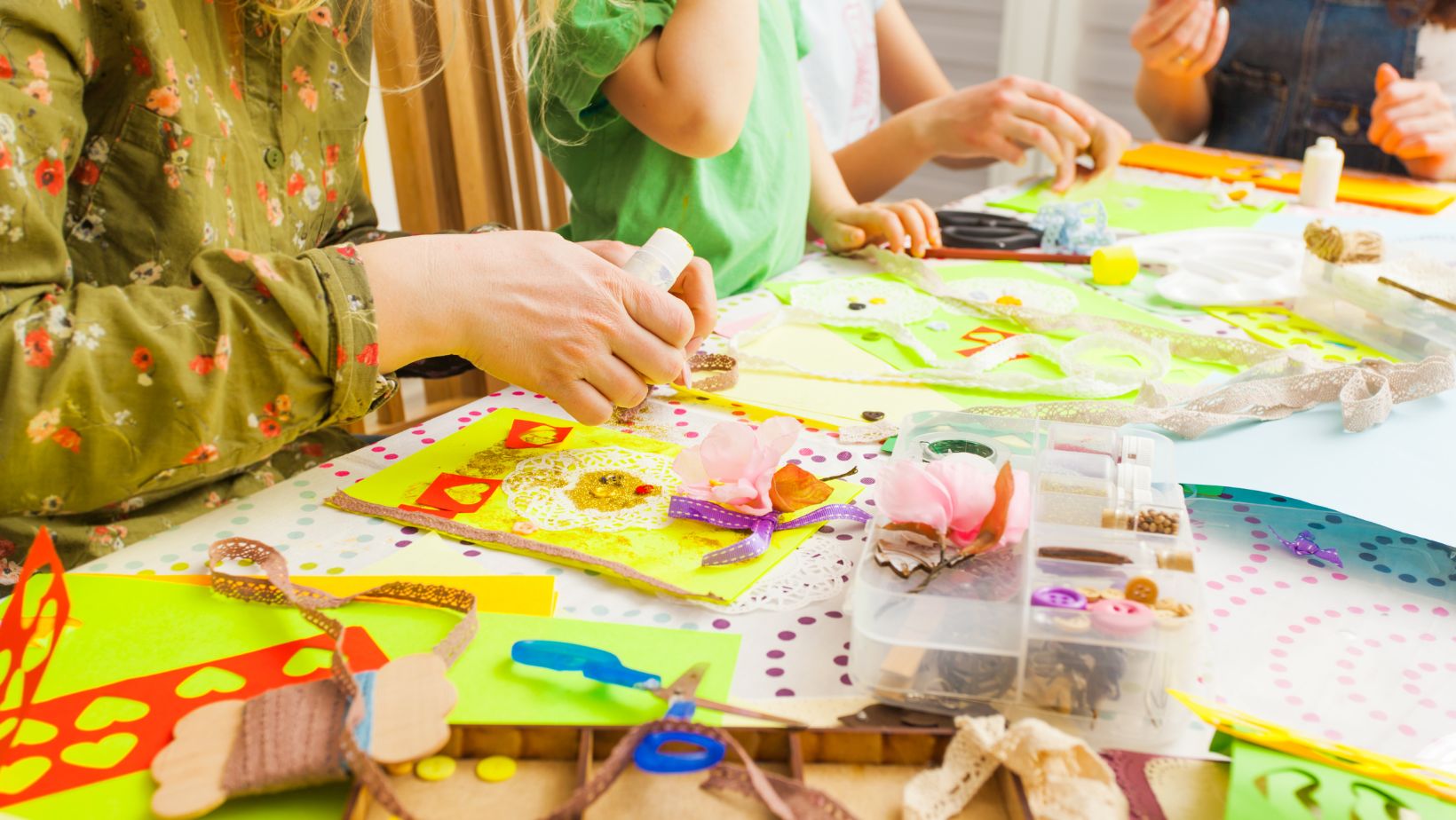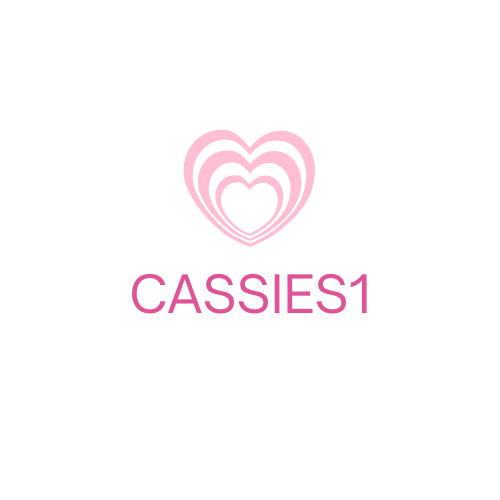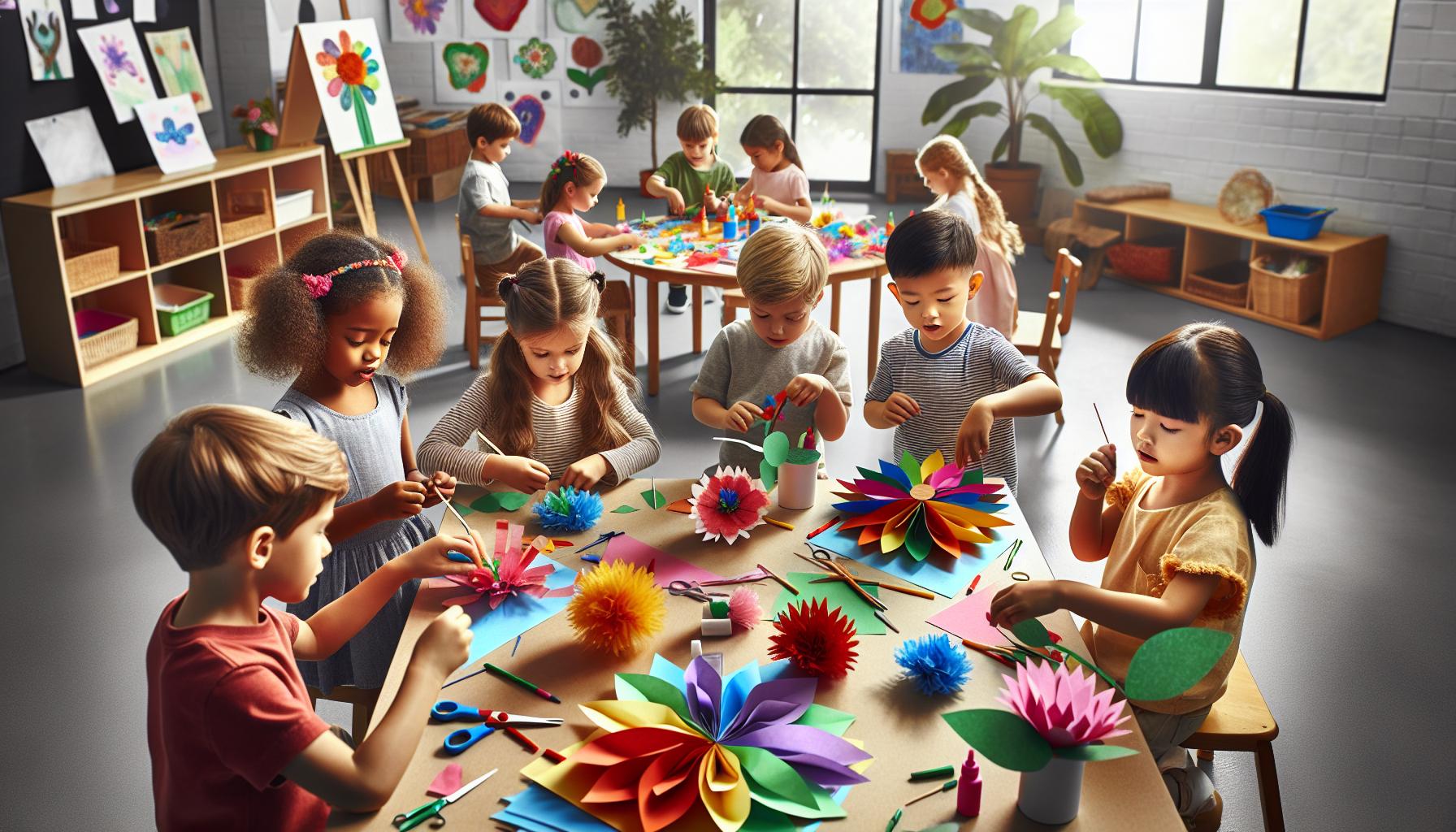There’s something magical about flowers that captivates both young and old. As a parent or educator, I know how important it is to nurture creativity in preschoolers. Flower crafts not only spark imagination but also help kids develop fine motor skills and learn about nature.
Key Takeaways
- Nurtures Creativity: Flower crafts stimulate imagination and encourage self-expression in preschoolers, allowing them to explore their artistic potential.
- Supports Fine Motor Skills: Activities like cutting and gluing flowers enhance fine motor skills, hand-eye coordination, and dexterity through hands-on experience.
- Promotes Cognitive Development: Engaging with flower crafts helps develop cognitive abilities, such as sorting and problem-solving, while discussing various flower types enriches vocabulary.
- Enhances Emotional Well-Being: Completing flower crafting projects boosts children’s self-esteem and confidence, providing a sense of accomplishment.
- Encourages Connection with Nature: Nature-based flower activities help children appreciate their environment and learn about the elements of plants, fostering a love for nature.
- Materials Variety Enhanced Exploration: Using diverse and recycled materials in flower crafts not only fosters creativity but also promotes environmental awareness among preschoolers.
Preschool Flower Crafts
Preschool flower crafts engage children’s creativity while introducing them to nature’s beauty. These activities foster learning and development through fun and exploration.
Importance of Flower Crafts in Preschool
Flower crafts in preschool encourage creativity and self-expression. Engaging with colorful materials stimulates visual senses, promoting artistic skills. Activities centered around flowers connect children with nature, helping them understand the environment and its elements. They also enhance social skills, as children work together on projects, sharing ideas and collaborating.
Benefits for Child Development
Flower crafts provide numerous developmental benefits:
- Fine Motor Skills: Cutting, gluing, and assembling flowers improve hand-eye coordination and dexterity.
- Cognitive Skills: Sorting and categorizing flowers by color or size enhance critical thinking and problem-solving abilities.
- Language Skills: Discussing flower types, colors, and crafting techniques enriches vocabulary and communication skills.
- Emotional Development: Completing a craft project fosters a sense of accomplishment, building self-esteem and confidence.
- Sensory Exploration: Interacting with different textures, colors, and shapes develops sensory processing abilities.
Incorporating flower crafts into preschool curricula supports holistic development while making learning enjoyable.
Popular Preschool Flower Crafts Ideas
 Exploring flower crafts opens a world of creative possibilities for preschoolers. These activities engage children’s hands and minds while introducing them to the beauty of flowers and nature.
Exploring flower crafts opens a world of creative possibilities for preschoolers. These activities engage children’s hands and minds while introducing them to the beauty of flowers and nature.
Paper Flower Crafts
Creating paper flowers offers simple and effective ways to spark creativity. I can facilitate various projects, such as:
- Tissue Paper Flowers: Children crumple colorful tissue paper and layer it to form vibrant blooms.
- Construction Paper Flowers: Pre-cut flower shapes promote fine motor skills. Kids can decorate these with markers or stickers.
- Origami Flowers: Introducing basic folding techniques, origami builds patience and precision as kids create delicate blossoms.
Fabric Flower Crafts
Using fabric adds texture and dimension to flower crafts. Options include:
- Felt Flower Magnets: Cutting and assembling felt into flower shapes allows for creativity and culminates in a functional decoration for home use.
- Sewn Flowers: Simple sewing projects help enhance hand-eye coordination as kids stitch together fabric pieces for unique floral designs.
- Flower Headbands: Crafting fabric flowers into headbands encourages wearability and adds a personal touch for children to showcase their creations.
Nature-Based Flower Crafts
Incorporating natural materials connects children with their surroundings. Ideas include:
- Pressed Flowers: Collecting and pressing flowers teaches observation skills, resulting in beautiful art pieces that kids can frame.
- Flower Painting: Dipping real flowers in paint provides a fun alternative to brushes, allowing preschoolers to create unique prints.
- Flower Collage: Utilizing leaves, petals, and stems for a collage promotes creativity while educating kids about different plant parts and their colors.
These preschool flower crafts enhance creativity, fine motor skills, and an appreciation for the natural world. Engaging children with these activities promotes enjoyment and learning in a hands-on way.
Materials Needed for Flower Crafts
Gathering the right materials for flower crafts streamlines the creative process and enhances the crafting experience for preschoolers. Below are essential supplies and eco-friendly options to consider.
Basic Supplies
- Construction Paper: Use colorful sheets for petal and leaf shapes.
- Tissue Paper: Great for layering and creating vibrant flowers.
- Scissors: Choose safety scissors designed for young children.
- Glue: Opt for washable school glue for easy clean-up and secure adhesion.
- Markers and Crayons: Use these for adding details and decoration.
- Pipe Cleaners: Perfect for making flower stems and adding dimension.
- Stickers: Decorative stickers can enhance flower creations.
- Recycled Paper: Utilize old magazines or newspapers for crafting.
- Natural Dyes: Create dyes using fruits and vegetables for a safe coloring method.
- Leaves and Twigs: Collect natural items from outdoor walks for embellishments.
- Old Fabric: Repurpose worn clothing or scraps into fabric flowers.
- Egg Cartons: Cut and paint them to form unique, textured flowers.
- Cardboard: Use leftover boxes for sturdy flower bases and structures.
Incorporating a mix of these materials encourages preschoolers to explore their creativity while being mindful of environmental impact.
Tips for Successful Flower Crafts![]()
 Successful flower crafts for preschoolers involve creativity and safety. Implementing these tips enhances the crafting experience while ensuring enjoyment.
Successful flower crafts for preschoolers involve creativity and safety. Implementing these tips enhances the crafting experience while ensuring enjoyment.
Encouraging Creativity
Encouraging creativity in preschoolers starts with offering diverse materials. Provide construction paper, tissue paper, and natural items like leaves and twigs to inspire innovative projects. Allow children to choose colors and designs, promoting individual expression. Suggesting different flower shapes and sizes motivates experimentation. Incorporate open-ended questions, such as “What would happen if we mix these colors?” to stimulate imaginative thinking. Celebrating unique creations fosters confidence and enthusiasm, making crafting a joyful experience.
Safety Precautions
Prioritizing safety during flower crafts ensures a secure environment. Choose age-appropriate tools, like safety scissors, for little hands. Supervise glue usage to prevent mess and ingestion. Avoid small items that pose choking hazards. Maintain a clean workspace to minimize accidents. Discuss the importance of handling materials safely, emphasizing gentle use of scissors and glue. Regularly check for any hazards in the crafting space, ensuring preschoolers feel safe while exploring their creativity.
Engaging preschoolers in flower crafts opens up a vibrant world of creativity and learning. These activities not only spark imagination but also nurture essential skills that will benefit them in various aspects of life. I’ve seen firsthand how such crafts can transform a simple afternoon into a delightful exploration of colors and textures.
By incorporating these projects into playtime, we can foster a love for nature while enhancing fine motor skills and encouraging self-expression. It’s a beautiful way to connect with children and watch them flourish. So let’s gather our materials and dive into the joy of crafting together. The possibilities are endless and the memories we create will last a lifetime.

